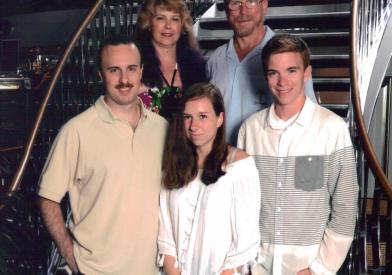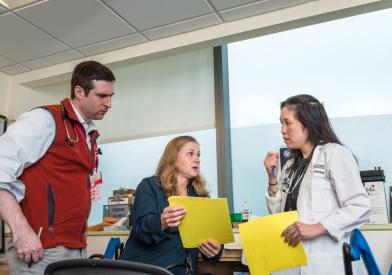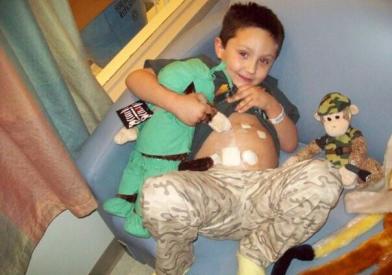What Are Childhood Pheochromocytoma and Paraganglioma Tumors?
Pheochromocytomas and paragangliomas are tumors that develop out of the neuroendocrine tissue responsible for making epinephrine. This hormone, also known as adrenaline, and other related hormones help regulate heart rate and blood pressure in response to stress.
- Pheochromocytomas, known as PCCs, are found in the adrenal gland, specifically in the adrenal medulla that produces adrenaline. PCCs secrete epinephrine and norepinephrine hormones.
- Paragangliomas, known as PGLs, can develop anywhere in the body from the pelvis to the skull. Some release hormones that are similar to adrenaline, and others do not.
- PCCs and PGLs are rare and often grow slowly.
- Most are benign but can cause high blood pressure, sweating, and headaches when they produce hormones.
- Many are associated with genetic or inherited conditions. Hereditary paraganglioma-pheochromocytoma is an inherited condition that occurs when benign tumors grow in the paraganglia.
At Dana-Farber/Boston Children's Cancer and Blood Disorders Center, our pediatric cancer specialists are deeply committed to providing your child with the best possible care. Our integrated Endocrine-Oncology Program team includes experienced medical oncologists, surgeons, and researchers who work together to advance the treatment of pheochromocytoma and paraganglioma tumors.
Causes and Symptoms of Childhood Pheochromocytoma and Paraganglioma Tumors
As a caregiver, you understandably want to know what may have caused your child's tumor. Sometimes, tumors appear with no known cause. Some result from a mix of genetic and environmental factors, while inherited conditions can cause others.
Examples of conditions associated with PGLs and PCCs include:
- Hereditary paraganglioma-pheochromocytoma syndrome
- Neurofibromatosis
- von Hippel-Lindau disease
- Multiple endocrine neoplasia (MEN)
- Tuberous sclerosis
- Sturge-Weber syndrome
- Ataxia-telangiectasia
The symptoms of PCCs or PGLs may vary from child to child. They depend on the tumor location and whether it produces hormones.
The most common symptoms include:
- High blood pressure
- Rapid pulse
- Heart palpitations
- Headache
- Dizziness
- Poor weight gain despite a good appetite
- Abdominal pain
- Nausea
- Vomiting
- Pale skin
- Clammy skin
- Sweating
- Growth failure
If your child experiences any of these symptoms, it's important to visit your doctor for an immediate evaluation.
How We Diagnose Childhood Pheochromocytoma and Paraganglioma Tumors
Every child's treatment plan starts with an accurate and well-informed diagnosis. Your child's doctor will order a combination of diagnostic tests based on your child's symptoms and health history, including advanced imaging studies, biopsy, and blood and urine tests. We may also perform genetic testing to determine whether the tumor is linked to specific genes.
If your child needs any additional testing, your doctor will discuss their recommendations with you. Once we have an accurate and complete diagnosis, we will develop a treatment plan that meets your child's unique needs.
How We Treat Childhood Pheochromocytoma and Paraganglioma Tumors
We typically treat pheochromocytoma and paraganglioma tumors with surgery. We perform surgical procedures to biopsy the tumor and remove the tumor and nearby tissue. We use a minimally invasive approach, such as laparoscopy or thoracoscopy, whenever possible.
Sometimes, before removing a pheochromocytoma, your child's doctor may prescribe medicine to control high blood pressure.
After treatment, we will continue to care for your child through our pediatric cancer survivorship programs. Support services include patient and family education, support groups, and counseling.




